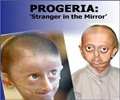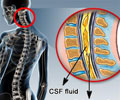The Translational Genomics Research Institute (TGen) has uncovered a way to track down the source of a neurological disorder in a young girl, using a basic genetic difference between men and women.

The study of a pre-teen girl, who went years with an undiagnosed neuro-behavioral condition, was published today in the scientific journal PLOS ONE.
TGen's findings were made within its Dorrance Center for Rare Childhood Disorders, where investigators and clinicians apply the latest tools of genomic medicine to provide answers for parents seeking to identify the disease or disorder affecting their child.
The scientists sequenced, or spelled out in order, the complete genetic codes of DNA and RNA of the girl. Because girls inherit an X chromosome from each of their parents (boys inherit a Y chromosome from their father), they also sequenced her mother and father. On average, about half of all X chromosomes active in a female come from the mother and the other half from the father.
"We now have the tools to significantly accelerate the diagnostic process, reducing the need for children to undergo multiple tests that can be emotionally and physically taxing for the entire family," said Dr. David Craig, TGen's Deputy Director of Bioinformatics, Co-Director of the Dorrance Center and the paper's senior author.
Sequencing would reveal the proportion of X chromosomes, and if disproportionate, whether the more abundant of the two were damaged in some way, which often leads to X-linked genetic conditions.
Advertisement
By sequencing the DNA and RNA, TGen investigators were able to precisely identify which cells contained active X chromosomes from the girl's mother, which contained active X chromosomes from the father, in what proportions, and whether they were associated with any known disorders.
Advertisement
"This study shows the power sequencing holds when scanning for potential disease causing and disease-modifying genetic variations," said Dr. Matt Huentelman, the other Co-Director of the Dorrance Center and an author of the PLOS ONE paper. "I'm most excited to see the pace at which TGen has pushed the genome sequencing technology to where it can help patients today."
TGen Research Associate Szabolcs Szelinger, the paper's lead author, said: "With just a small bio sample, we are now able to provide a comprehensive evaluation of the effects that genetic variation has on patients, leading to highly personalized treatment options, while at the same time providing researchers with insights into the underlying molecular processes."
Source-Eurekalert















